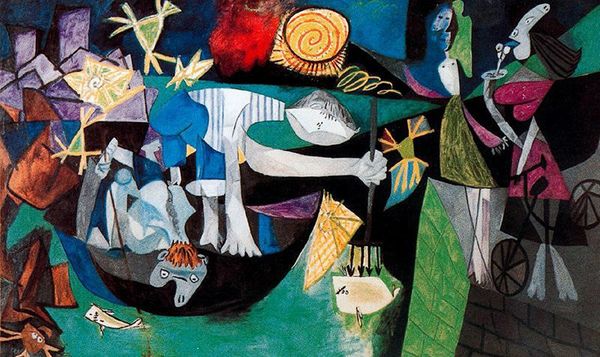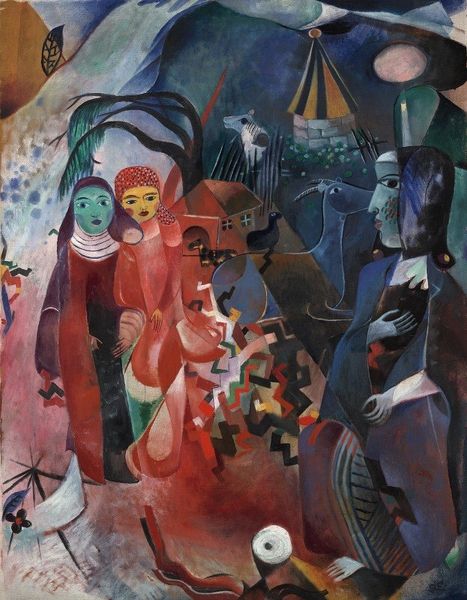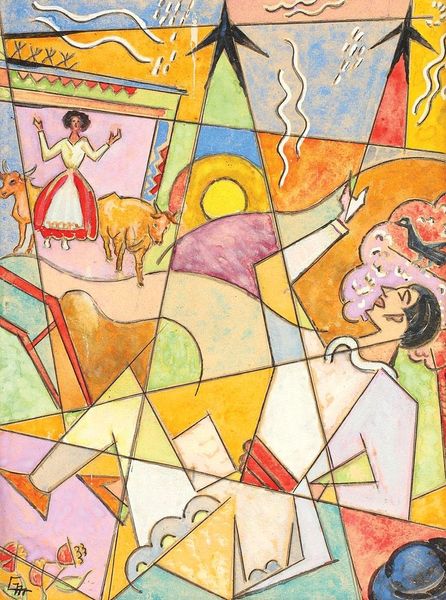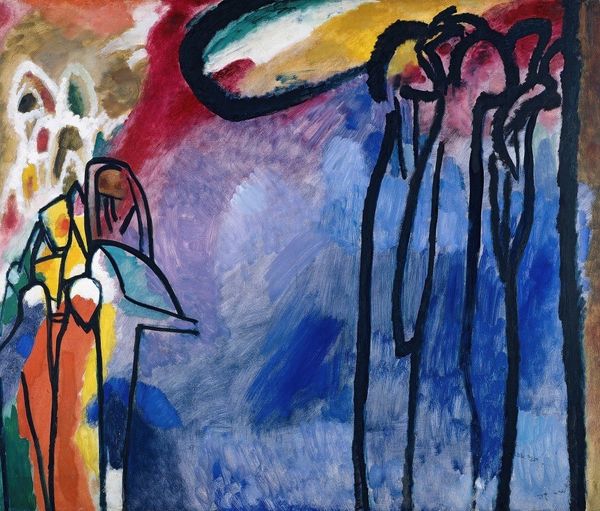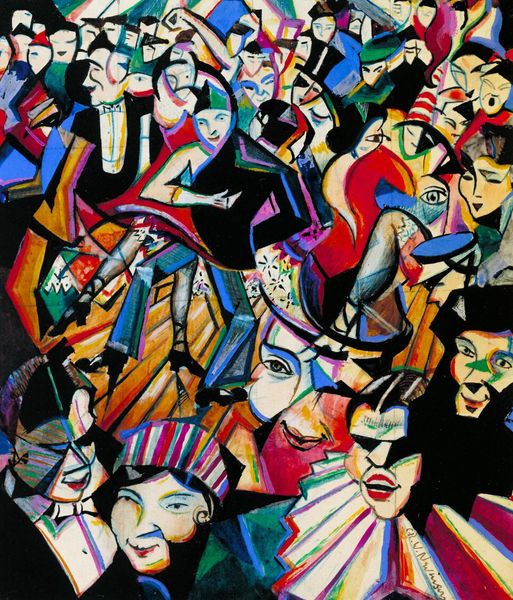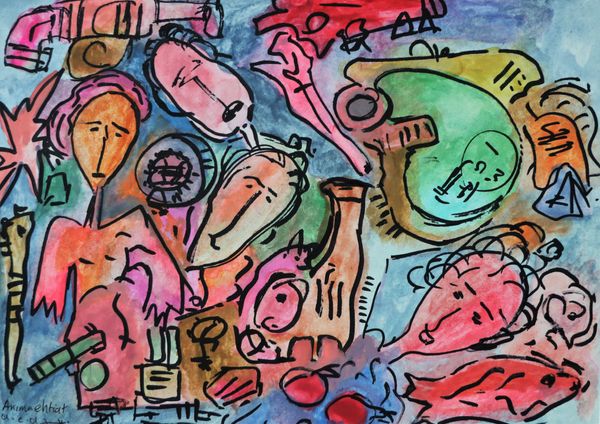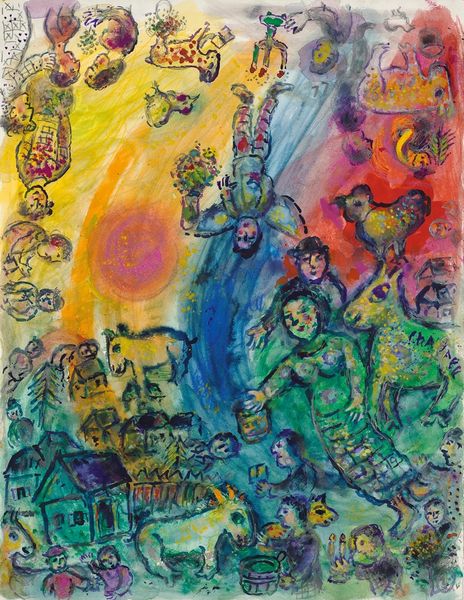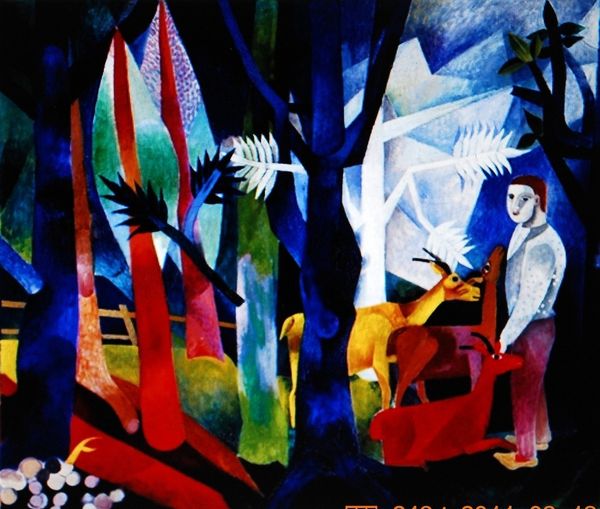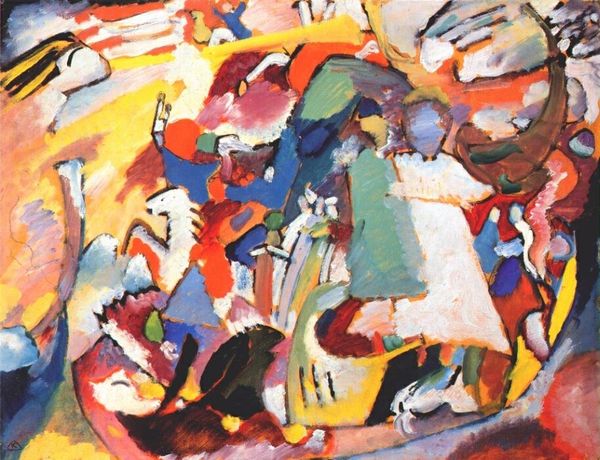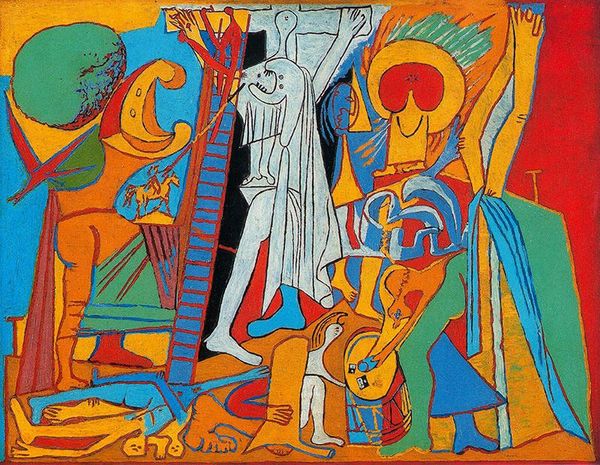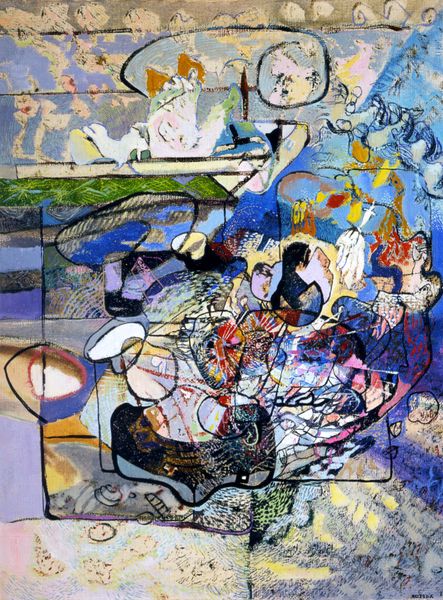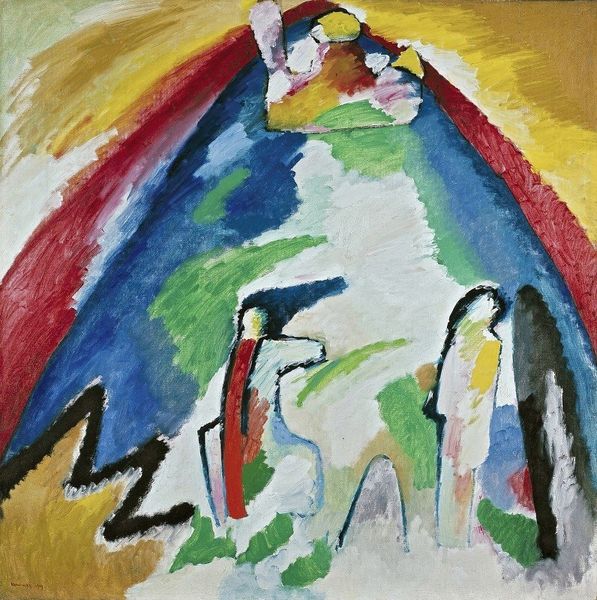
painting, oil-paint
#
figurative
#
painting
#
oil-paint
#
figuration
#
expressionism
#
symbolism
Copyright: Public Domain: Artvee
Editor: Wassily Kandinsky’s "All Saints Day I," painted in 1911 using oil paints, presents a vibrant scene, full of figures and symbolic elements. I’m immediately struck by how he mixes religious iconography with this almost dreamlike, expressionistic style. What do you see in this piece? Curator: I see a powerful blend of cultural memory and personal vision. Kandinsky, rooted in Russian folk traditions and spirituality, layers symbolic images here: we have death, resurrection, saintly figures, all swirling together. The trumpet, for example, calls to mind not just religious paintings, but also folk traditions of celebrating life, warding off misfortune and calling spirits for help, reflecting shared experiences. Do you see any echoes of his Russian background in this? Editor: I do. The onion domes of what appears to be a Russian Orthodox church certainly stand out, and the icon-like figures evoke that Byzantine artistic tradition. It almost feels like he’s building a new visual language using these ancient symbols. Curator: Precisely. Kandinsky is exploring how visual symbols accumulate meaning across cultures and through time. Consider the mountain of figures versus the skeletal figure being taken away on a boat. These carry weight through time. But look, what do you think of his use of color here? Do you see connections, say, with the "Blue Rider" group that he was forming with Franz Marc and others at that time? Editor: The bright yellows and blues definitely resonate with other "Blue Rider" works I’ve seen. The use of color really amplifies the emotional intensity, especially in contrast to the darker, more somber images. Curator: Yes, these intense hues charge these forms with extra meaning. Through analyzing images we might gain access to the deepest shared feelings of a society, encoded within objects over time. Editor: That makes me see the piece in a new light! It’s not just a religious scene, but a cultural landscape, alive with layered meanings. Curator: Exactly. Each time we see these images, new context reveals more information.
Comments
No comments
Be the first to comment and join the conversation on the ultimate creative platform.
